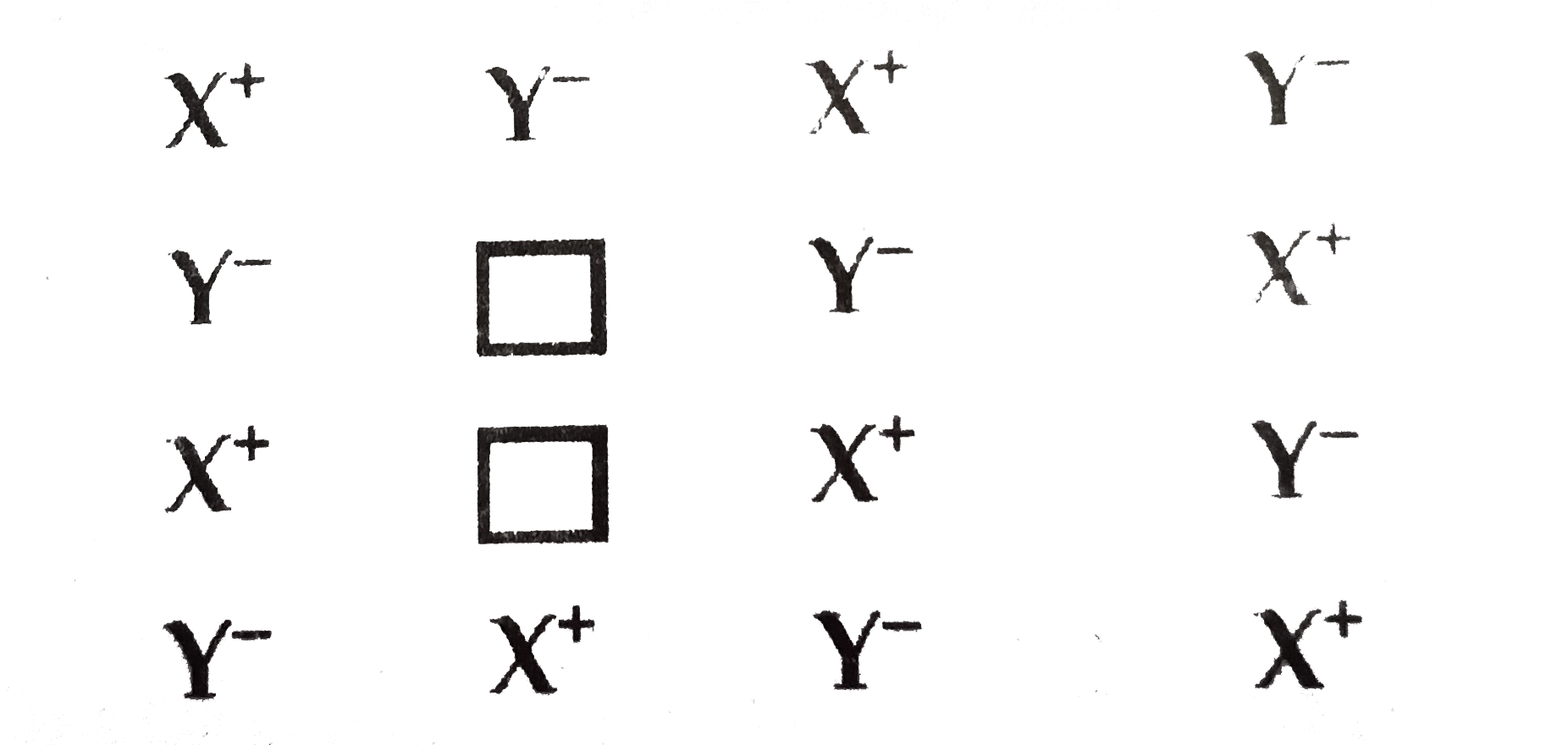An ideal crystal has the same unit cell containing the same lattice points throughout the whole of crystal. But such ideal crystals exist only at 0 K temperature. However, during the formation of crystal structure, certain defects are produced. These defects are point defects, line defects, vacancy defects, interstitial defects or impurity defects. Due to these defect, the crystals exhibit different properties. Presence of delocalised electrons make the metals conductor of electricity . Germanium and silicon are the most important commericial semiconductors. By adding impurities such as arsenic and boron, n and p - type semiconductors can be synthesised. Various combinations of n and p type semiconductors are used to make electronic components.
Name the type of point defect that occurs in a crystal of zinc sulphide. Will it increase, decrease or not change the density ?
To solve the question regarding the type of point defect in zinc sulfide and its effect on density, we can follow these steps:
1. Identify the Type of Crystal:
- Zinc sulfide (ZnS) is a compound that forms a crystal lattice structure.
2. Understand Point Defects:
- Point defects are imperfections in the crystal lattice that occur at specific points. They can be classified into different types, including vacancies, interstitials, and Frenkel defects.
3. Determine the Specific Point Defect in ZnS:
- In zinc sulfide, the predominant point defect is the Frenkel defect. This occurs when a cation (Zn²⁺) leaves its lattice position and occupies an interstitial site, creating a vacancy in the lattice.
4. Analyze the Effect on Density:
- In the case of a Frenkel defect, the cation that moves from the lattice site to the interstitial site does not leave the crystal structure; it simply relocates within it.
- Since the total number of ions in the crystal remains the same, the overall mass of the crystal does not change.
- Therefore, the density of the crystal, which is defined as mass per unit volume, will not change as a result of the Frenkel defect.
Final Answer:
- The type of point defect that occurs in a crystal of zinc sulfide is a Frenkel defect. The density of the crystal will not change due to this defect.
- Zinc sulfide (ZnS) is a compound that forms a crystal lattice structure.
- Point defects are imperfections in the crystal lattice that occur at specific points. They can be classified into different types, including vacancies, interstitials, and Frenkel defects.
- In zinc sulfide, the predominant point defect is the Frenkel defect. This occurs when a cation (Zn²⁺) leaves its lattice position and occupies an interstitial site, creating a vacancy in the lattice.
- In the case of a Frenkel defect, the cation that moves from the lattice site to the interstitial site does not leave the crystal structure; it simply relocates within it.
- Since the total number of ions in the crystal remains the same, the overall mass of the crystal does not change.
- Therefore, the density of the crystal, which is defined as mass per unit volume, will not change as a result of the Frenkel defect.
- The type of point defect that occurs in a crystal of zinc sulfide is a Frenkel defect. The density of the crystal will not change due to this defect.
Topper's Solved these Questions
- BOOK - MODERN PUBLICATIONCHAPTER - SOLID STATEEXERCISE - REVISION EXERCISES (OBJECTIVE QUESTIONS) (ASSERTION REASON QUESTIONS)10videos
SOLID STATE
- BOOK - MODERN PUBLICATIONCHAPTER - SOLID STATEEXERCISE - REVISION EXERCISES (VERY SHORT ANSWER QUESTIONS)24videos
SOLID STATE
- BOOK - MODERN PUBLICATIONCHAPTER - SOLID STATEEXERCISE - REVISION EXERCISES (OBJECTIVE QUESTIONS) (MATCHING TYPE QUESTIONS)6videos
SOLID STATE
- BOOK - MODERN PUBLICATIONCHAPTER - POLYMERSEXERCISE - Competition file (OBJECTIVE TYPE QUESTIONS) (C. MULTIPLE CHOICE QUESTIONS)(Integer Type Questions)6videos
POLYMERS
- BOOK - MODERN PUBLICATIONCHAPTER - SOLUTIONSEXERCISE - UNIT PRACTICE TEST14videos
SOLUTIONS
Similar Questions
Knowledge Check
- Question 1 - Select One
Schottky defect to crystals is observed when
AUnequal number of cations and anions are missing from the lattice.BEqual number of cations and anions are missing from the lattice.CAn ion leaves its normal site and occupies an interstitial site.DDensity of the crystal is increased. - Question 2 - Select One
In NaCl crystal, the nature of the defect is:
AInterstitial defectBSchottky defectCFrenkel defectDNone of these
Name the defect in the following crystal:
 View Solution
View SolutionWhich point defect decreases the density of crystals ?
View SolutionWhat are stoichiometric defects or intrinsic defects in ionic crystals ?
View SolutionWhy stoichiometric defects are also called intrinsic defects?
View SolutionWhat is meant by point defect in crystals ?
View SolutionWhat are point defects ? Describe Schottky defects in crystals.
View Solution

